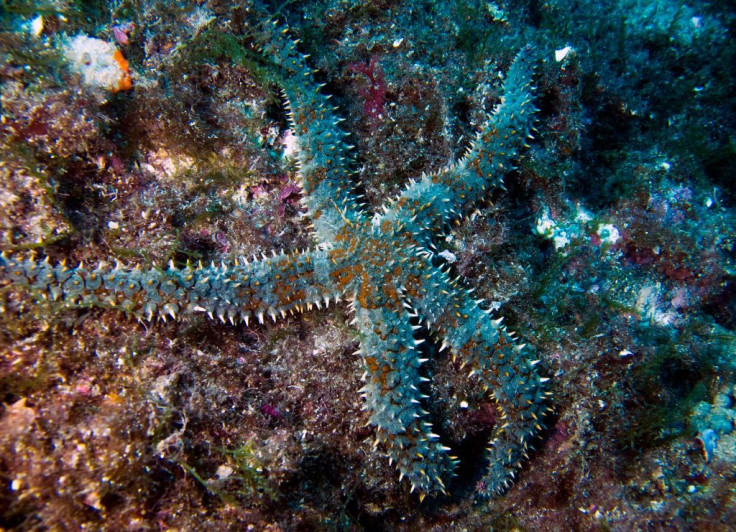Microbes 'Drowning' Sea Stars: Researchers Shed Light On Mysterious Starfish-Killing Disease
KEY POINTS
- A mysterious disease has been killing sea stars across the globe
- The exact cause of it remains a mystery
- A new study suggests that sea stars may be 'drowning' as microbes deplete the oxygen in the water
What's behind the mysterious disease that has been decimating the starfish population worldwide? A team of researchers found that a combination of conditions may be causing the sea stars to essentially "drown."
A mysterious disease that caused mass starfish deaths made the headlines during 2013-14. It still persists but the extent has come down. Although sea stars have been making a comeback since then, scientists are still working to find out exactly what caused the sea star wasting disease (SSWD), with some suggesting that it may have been caused by a virus.
In a new study, published in Frontiers in Microbiology, a team of researchers found that the sea stars may be losing their ability to breathe in their own environment. According to a news release from Cornell University, the sea stars falling victim to SSW may actually be drowning.
How does this happen? It all starts with the ocean environment and a sequence of unfortunate events follows.
It's no mystery that ocean conditions have been changing in recent years. According to study co-author Ian Hewson, of Cornell University, these changed conditions have been producing "unusual amounts" of organic material, which then allow bacteria to grow and thrive. They consume the organic matter quickly and end up depleting the oxygen in the environment where the sea stars live.
The Cornell University professor said sea stars breathe by absorbing oxygen from the seawater through the structures in their outer surface, called papulae. But if the oxygen level around their papulae is low, the sea stars won't be able to breathe.
The researchers' work shows that this may be exactly what has been happening to the sea stars.
"These results together illustrate that depleted O2 conditions at the animal-water interface may be established by heterotrophic microbial activity in response to organic matter loading," the researchers wrote.
The team also found evidence suggesting this may have happened to the sea stars during the infamous mass mortality event years ago.
"(O)ur results suggest that this interaction may have occurred during mass mortality in 2013–2014, since δ15N was enriched in affected tissues relative to grossly normal individuals collected at the time," the researchers wrote in their study.
Although the team said more research is required, the work sheds light on the mysterious disease that has been around for quite a long time.
SSW events have been reported since 1896, the researchers said. The National Oceanic and Atmospheric Administration (NOAA) note that some experts have seen similar events in Southern California in the 1990s, although not to a similar degree as the mass mortality events.
"This reframes the discussion about marine disease ecology, which has focused on pathogenic disease," Hewson said in the news release. "We should now include microorganisms that don't directly cause the pathology, since they may hold a key to affecting sea star health."

© Copyright IBTimes 2024. All rights reserved.






















